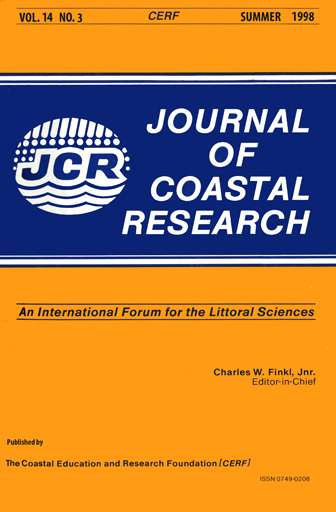Recent Barrier Beach Retreat in Georgia: Dating Exhumed Salt Marshes by Aspartic Acid Racemization and Post-bomb Radiocarbon
Keywords:
Amino acid racemization, radiocarbon dating, Spartina, GeukensiaAbstract
On St. Catherines Island, Georgia, the barrier beach is retreating rapidly landward, burying living salt marsh as it moves and later exhuming it on the ocean side. Two methods were used to reconstruct the history of over wash events, by dating the time of death of salt marsh mussels (Geukensia demissa) and grasses (Spartina alterniflora) killed by overwash sands land now exhumed on the ocean side of the barrier beach): aspartic acid (Asp) racemization and postbomb radiocarbon analysis. The former method involves the conversion of L-Asp to D-Asp in shell proteins and provides good resolution for dating the last few centuries. Radiocarbon analysis offer s high-resolution dating subsequent to the thermonuclear bomb tests of the late 1950s. However, for a number of reasons, it is of little use for resolving ages within the preceding three centuries. It is suggested that one problem with radiocarbon dating is that, in intertidal mollusk s ells, some atmospheric carbon is incorporated, complicating correction for the marine reservoir age.
Determination of the rate of Asp racemization in Geukensia shells on St. Catherines Island was made by comparison of D/L Asp values with the age of one sample determined by post -bomb radiocarbon to be AD 1980 (± 1 yr). This rate was used to determine ages from D/L Asp values at three relict marsh sites on the ocean side of the island. In the southern and middle sites, living marsh was destroyed by overwash around 1980- 82, whereas at the northernmost site, the marsh was destroyed in the late 1930s or early 1940s. The rate of retreat on the ocean side of the barrier beach at the northernmost site was determined by study of aerial photos from 1945 and 1990. The retreat rate during this period averaged 3.8 m/yr. The photos also indicate that the landward margin of the overwash fans here have been stationary over this period, so the barrier beach has narrowed considerably at this site. A reduction in the sediment supply to the area combined with the lack of supply of sands from the relict marsh muds eroding along the shore face probably caused erosion to outpace landward extension of the barrier beach by overwash.
Evidence of the earlier dynamics of the salt marsh is exposed in the relict marshes eroding away on the ocean side of the barrier island. These contain older layers of marsh, buried by muds. At the middle site , accretion of muds buried these portions of the salt marsh ca. 16 and 26 yr before the site was covered by an overwash fan from the barrier island, whereas at the southerly site , the earlier marsh was buried by muds some 160 yr before the overwash event.
Aspartic acid racemization has excellent potential for the analysis of coast al dynamics over the last few centuries. It provides a means of comparing the geological record with historical records and also provides information on coastal behavior before written records.


